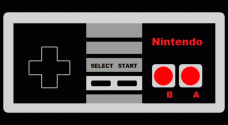Think back to the late 80s. The Nintendo Entertainment System dominated living rooms, delivering unforgettable gaming experiences. Among the titans like Mario and Zelda were tougher, grittier challenges, and one title that stood out for its sheer difficulty and unique premise was Konami's Rush’n Attack NES.
While it started life in the arcades (known as Green Beret in some parts of the world), the NES version wasn't just a straight port. It brought its own flavor of Cold War-era infiltration, armed primarily with just a knife, and tested the mettle of countless young gamers. Forget complicated controls or sprawling maps; this was about moving forward, surviving impossible odds, and feeling like a true one-man army... albeit one who goes down in a single hit.
From Arcade to NES: The Console Conversion
The arcade Green Beret was a hit, a side-scrolling action game where you rescued POWs. When Konami brought it to the NES, they made some key changes. The objective shifted slightly – instead of rescuing POWs, you were tasked with destroying a secret weapon. This wasn't just cosmetic; it allowed for level design variations and a different narrative hook for the home console audience.
The NES version also famously added a two-player simultaneous co-op mode. Sharing the screen with a buddy, trying to coordinate knife swipes and dodge bullets, added a whole new layer of chaotic fun (and often, accidental friendly fire or competitive power-up grabbing).
Knives Out! Gameplay on the NES
At its core, Rush’n Attack NES is a run-and-gun, but with a crucial twist: your primary weapon is a knife. Yes, a knife. You spend most of the game running right, slashing enemies who charge at you, parachute in, or pop out of bunkers.
Occasional enemy soldiers would drop temporary power-ups:
- A pistol with limited ammo
- A three-shot RPG launcher
- Hand grenades
These felt like a godsend, offering brief respites from the close-quarters knife combat. But ammo was scarce, and you'd soon be back to relying on your trusty blade and quick reflexes.
The game was notoriously difficult. Most enemies, and you, went down in a single hit. Mastering the timing of the knife slash, learning enemy patterns, and knowing exactly when to jump or duck was paramount. It was a game that demanded practice and punished mistakes instantly.
More Stages, New Objectives
Beyond the altered main goal, the NES port expanded on the arcade's four stages. The home version included two entirely new stages, giving players more ground to cover and more unique environments like missile bases and airfields to infiltrate. These new levels, combined with the original four, made the NES experience a more substantial journey.
While the arcade had a flamethrower, the NES version swapped it out, focusing on the knife, pistol, RPG, and grenades. It also added temporary invincibility and pistol power-ups, which were absolutely essential for getting through some of the game's tougher sections.
The Sound of Soviet Infiltration
One area where the Rush’n Attack NES truly shined, and differed significantly from its arcade counterpart, was its music. The original arcade game was largely devoid of music during gameplay, relying on sound effects. The NES version, however, featured a catchy and memorable soundtrack composed by Iku Mizutani (among others, potentially).
The Stage 1 theme, in particular, is iconic for anyone who played the game. It perfectly captured the tense, urgent feeling of infiltrating enemy territory, the relentless beat pushing you forward just like the gameplay itself. While short, the soundtrack added immense atmosphere and is fondly remembered by fans.
Why Rush'n Attack NES Still Holds Up (or Knocks You Out)
Rush’n Attack NES is a relic of a different era of game design – one that valued challenge and arcade-like intensity on home consoles. Its one-hit kills, relentless enemies, and reliance on a basic weapon made it frustratingly difficult but incredibly rewarding when you finally progressed.
For retro gamers, it's a nostalgic trip back to a time when Konami was pumping out classic after classic. It's a game that looks simple on the surface but requires genuine skill and patience.
Reliving the Cold War on Your Console
If you're feeling brave and want to revisit this tough-as-nails classic, finding the original cartridge is always an option for authentic NES hardware. Alternatively, emulation is a popular way to experience games like Rush’n Attack NES on modern PCs or devices. Keep an eye out for Konami retro collections, though specific titles included can vary.
Whether you tackle it solo or with a friend in co-op, Rush’n Attack on the NES remains a challenging, memorable slice of 8-bit history.
FAQ
Q: What is the difference between Rush'n Attack and Green Beret? A: They are essentially the same game! Green Beret is the original arcade title released by Konami, while Rush'n Attack is the name given to the North American arcade and home console ports, including the NES version.
Q: Is Rush'n Attack NES a difficult game? A: Yes, absolutely. It's widely considered one of the more challenging games on the NES due to the one-hit kill mechanic for both the player and most enemies, coupled with relentless enemy waves.
Q: Who developed Rush'n Attack NES? A: Rush'n Attack was developed and published by Konami.
Q: Does the NES version have the same levels as the arcade? A: The NES version includes the original four arcade stages plus two brand new stages exclusive to the home console release, making it a longer game.


